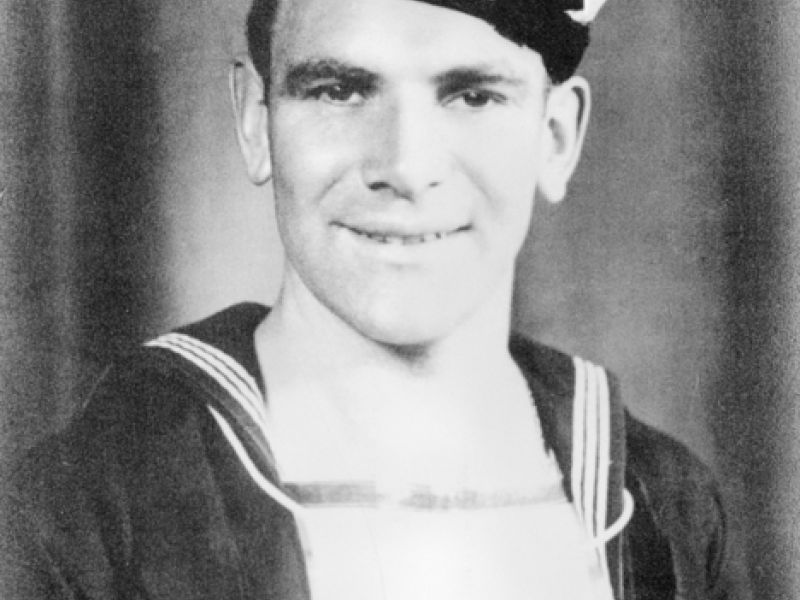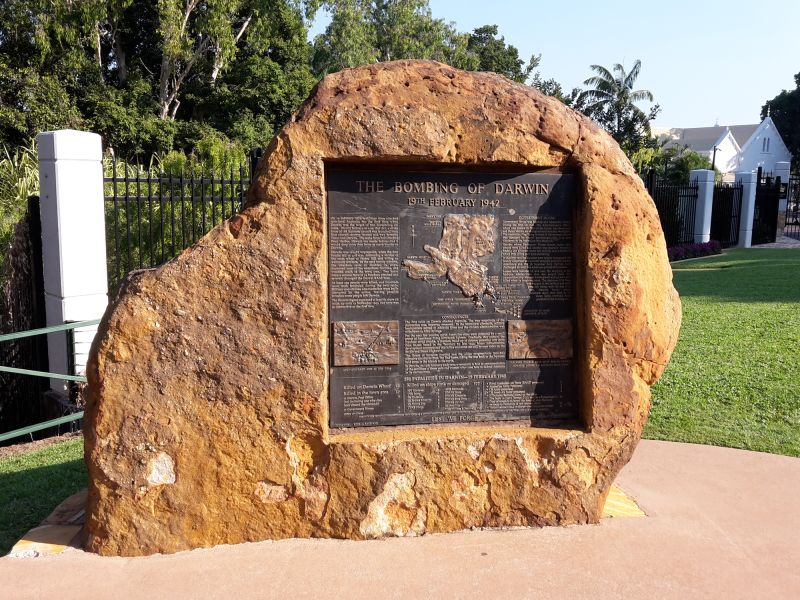Signalman Alwyn John Breen
Known as "Jack" to his family and "Bobby" to his shipmates, Breen was born in Kyabram, in the Goulbourn River Valley district, northern Victoria, on 13 September 1911. He was one of nine children of Robert and Beatrice Breen. Growing up in Kyabram, where he attended the Kyabram state primary and secondary schools, Alwyn Breen played the piano and enjoyed acting. In 1937 he gained employment with the Melbourne tramways. He enlisted in the Royal Australian Navy Reserve on 25 September 1939, just three weeks after the outbreak of the Second World War. Two brothers and a sister would also serve in the army. An uncle had served in the Great War a generation earlier.
Breen was posted to the navy's training establishment HMAS Cerberus, in Victoria, where he qualified in signals. In May 1940 he had a single day of sea service in the converted troopship Nieuw Zeeland and in August was promoted to the rating of ordinary signalmen. Towards the end of the year he spent three months on the auxiliary minesweeper HMAS Beryl (II), patrolling the approaches to Port Philip Bay.
In July 1941 Breen was posted to the sloop HMAS Swan (II). Armed with three 4-inch guns and four 3-pounder guns, she was fitted out as a minesweeper and operated as part of the 20th Minesweeping Flotilla on Australia's eastern and southern coasts. The Swan swept ten mines laid by the German auxiliary minelayer Passat.
Following the outbreak of war in the Pacific in December 1941, the Swan moved north to sweep the approaches to Port Moresby and carry out convoy escorts. In January 1942 she participated in evacuating civilians from Amboina, in the Moluccas, and was attacked by Japanese bombers, experiencing several near misses.
From February 1942 the Swan continued its minesweeping and escort duties from Darwin. In mid-February the sloop was an escort for a convoy taking reinforcements to Timor, which was forced to return to Darwin after being attacked by Japanese aircraft.
Four days later, on 19 February, the Japanese bombed Darwin. The Swan was in the harbour alongside the MV Neptune. The latter was sunk during the raid but the Swan was able to get away despite being attacked seven times and suffering several near misses. Breen and two other ratings, Leading Seaman John Sault and Able Seaman Albert Purdon, were killed in the attacks, with 19 wounded.
Breen was 30 years old. His family was later told that his action station was exposed and he suffered the full effects of a near miss. He was buried at sea off Darwin wharf.
Following his death, Breen's mother designed and arranged for the instalment of a stained-glass window in the Uniting Church in Kyabram, to be dedicated to her son.
- Studio portrait https://www.awm.gov.au/collection/C1224557?image=1

 Australian War Memorial
Australian War Memorial